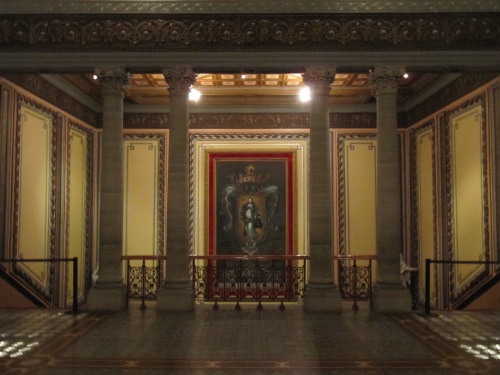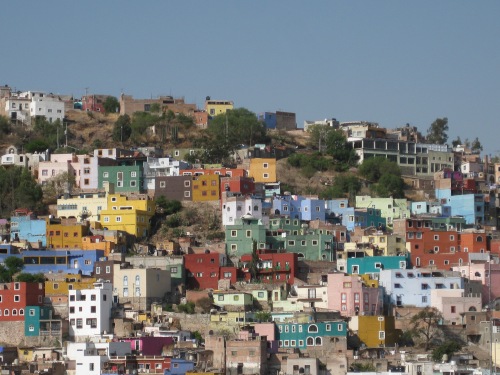Have you been dreaming of a trip to Europe, but can’t find the time and money to make it happen?
Well, up in the hills of Mexico’s Bajío region lies what might be the next best thing: the colonial mining city of Guanajuato.
Squint your eyes and you could be in Italy or Spain. (And, with a new 4-hour nonstop flight from Atlanta on Delta, it’s a heck of a lot easier to get to.)
I was lucky enough to come here for work! We recently finished a project in central Mexico, and we had to pick a nice nearby city for our annual meetings. (You might not be surprised to learn that I lobbied heavily for Guanajuato.)
Guanajuato is, in my opinion, among the very best colonial towns in the Americas. The only one I’ve seen to rival it is Ouro Preto in Minas Gerais, Brazil. And that particular place requires twice as much flying followed by hours on the bus, and it’s probably twice as expensive once you get there.
At one point one of Spain’s most successful silver mining towns, Guanajuato developed as a maze of narrow streets and grand buildings in the bottom of a steep valley.
The result is an effortlessly pedestrian-oriented city that has only a handful of roads open to cars. Streets bustle with activity day and night. The town basically has one major surface street that has one lane of traffic going in one direction–that’s it.
Since the colonial lanes are inherently about as automobile unfriendly as they come, the city developed a unique workaround to accommodate vehicles: it uses the old mining tunnels as roads.
The hills around town are all criss-crossed with tunnels.
Occasionally, you’ll find stairways connecting the surface pedestrian streets with the subterranean roads.
The city’s leafy central park, completely closed off to cars.
Ornate churches and quiet plazas abound.
Teatro Juarez–the city’s most celebrated building.
The theater’s lavish interior.
Mining relics.
Lest you forget you’re in Mexico, a quick trip to Mercado Hidalgo will bring you right back.
The market stalls out front cook up delicious meals on the cheap.
My favorite Mexican breakfast: chilaquiles verdes.
Caroline and I made a previous (pre-blog) visit to Guanajuato back in 2009. Here’s her about to dig in to some enchiladas molé.
And here’s 23 year-old me at the town’s main mirador.
The hills above town are much more typical Mexico. A quick walk from the colonial center brings you into a tangle of modern concrete houses.
Kind of a fun place to wander around, actually.
Ah, Mexico.
And what was that third M?
Oh yes, the mummies. Guanajuato has, bizarrely enough, plenty of them on display in the local Mummy Museum. Some strange mix of climate, disease, and economic inequality caused a large number of mummies to be…generated? (I’m not sure what the proper word choice is here.) The big mummy-generating period was from the mid-1800s to mid-1900s. In Mexico–ever a country to fixate on anything related to death–a whole bunch of mummies became a major tourist attraction.
The Mummy Museum is indeed strange, but also culturally indicative and morbidly fascinating. Vignettes are written from the mummy’s perspective.
To keep things light, I’ll spare you all the pictures of mummies. Just take my word for it that they were numerous and horrifying.
The museum takes the liberty to go beyond its core subject matter and eventually just focus on abstractions like death and “the beyond”. Using real human remains as props!
I’ve done my share of death speculation, so I can certainly appreciate it as a national sentiment.
Boo!
That’s all I’ll say about Guanajuato for now. I need to hold back some stuff in case we go back and need to make another blog post.
But just so you don’t think I covered everything there is to see in Guanajuato, there’s plenty more: the one-and-only Diego Rivera was born here (his birth home is a museum), sites from the early battles of the war of independence are here, you can tour mines, and a major art university means there’s lots of cool artistic stuff around. It’s definitely worth a trip.


































Enjoyed it. Put a smile on my face. 🙂
By: bagleydancer@mchsi.com on January 25, 2014
at 3:26 am
[…] Brașov’s main pedestrian street, catering mostly to local Romanians. Tourism is substantial in Brașov, but it maintains a large enough pull in Romania to keep a very local feel. The cultural and historical appeal in an under the radar city reminded me of Guanajuato, Mexico. […]
By: Brașov: the Medieval Heart of Transylvania | Cape to Milan on June 17, 2015
at 12:01 pm
[…] ago, we covered a hidden gem in Mexico: the incredible silver mining city of Guanajuato. Since then, Guanajuato has gotten a fair amount of international cred: I’ve seen it pop up […]
By: Taxco: Guerrero’s Silver City | Cape to Milan on January 4, 2018
at 3:33 am